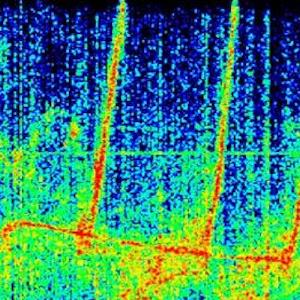In 1982, bollywood based guitarist, accordion player and upstart composer, Charanjit Singh recorded an album titled Ten Ragas To A Disco Beat. The album is techno before there was any techno! A brilliant accident if we can view it 30 years down the line. Classical ragas on analog synthesizers, backed by square bass patterns, 808/909 beats. The album's foundation in terms of sound, is based on the globally acclaimed "holy trinity" - Roland 303 Bass - The 909 Drum Machine & The Jupitor 6 Polyphonic synthesizer. 1982, EMI India released the album on limited vinyl, titled "Synthesizing: Ten Ragas To A Disco Beat". Albeit a marginal run on late night radio and some underground parties, the album vanished without a trace. "The future would be written elsewhere...."
However out of time and place, the album can be defined as acid-house by accident! A chance meeting point of Indian Ragas, 80s synthesis and beats. As countless electronic music pundits, journalists and writers believe (and claim) that Acid-House and techno is endemic to Detroit and Chicago(early 1985) not many ever heard 10 Ragas, an album that actually predates whatever happened in Detriot & Chicago. Given that earliest techno and acid-house is tagged on DJs and home-producers crawling out of the industrial collapse (the automobile industry of America), Charanjit's definition and legacy is audibly mature, in terms of musicality, composition and even taking risks.
A lot changed inside the electronic music universe in the years and decades to follow ... Fast Forward to 2008, the record is unearthed by Edo Boeman, a Dutch record collector while rummaging through discarded vinyls at a kitsch shop in Mumbai. Edo on first listen, is blown by the record! "At first listen, it sounded nothing like I had heard from Bollywood and nothing like Indian pop or electronica also..." recalls Edo in 2012. In early 2010, Bombay Connection based in Holland re-released the LP in two volumes - newly remastered. The record goes out a unsuspecting and largely impressionable public, who were quickly convinced that the sound was emerging from Chicago, Detroit and or Manchester in the mid-late eighties. Some even argued it was Aphex Twin 'belting' out the 'old-acid' under one of his dozen avatars. The disbelief aside, the sound of this record was immediately vintage, crude, yet futuristic and difficult to say ... Who? When? Fairly controversial. Just as the first (1985-88) and second (1994-97) wave of acid-house did arrive and thrive on the Roland 303 / 808 / 909 combination - on the albums of Phuture, Acid Trax, Jeff Mills, Juan Atkins, Cybotron in the late 80s - and later as with Aphex Twin, Ritchie Hawtins, Orbital, Luke Vibert etc in mid 90s. These artists, today are revered as superheroes of electronic music culture as much as the instruments itself which went onto become a standard, an uber-class within the canvas of electronic music for decades ...

We rediscovered and featured Charanjit's legacy in HUB (2010) - India's Electronic Music Anthology - READ HERE / DOWNLOAD - Charanjit Singh lives in Bombay. His life had changed a lot, but music remained an integral part. Presenting HUB, the anthology of Indian Electronic Music was a moment for us (me and Rana Ghosh) to cherish forever. Charanjit Singh and Ten Ragas To A Disco Beat is where the story of Indian electronic music actually begins to be precise. A re-birth of sorts, 28 years later. Back home, in India, most electronica enthusiasts remained clueless (2011) about the record and the rediscovery of the artist. What surprised us was his calm and down-to-earth persona. The fact, at the age of 62 he did realize, but in a vague way, about how his record was making a great buzz, almost 30 years later. Not in India but in the west. "I had no clue about electronic music as such, till I had spoken to Edo from Holland in 2009 when he showed up at my door... He told me that my record, Ten Ragas was of great value and that we should remaster the songs and press new vinyls" states Charanjit rather plainly chatting with us the time we visited his house the second time.
However out of time and place, the album can be defined as acid-house by accident! A chance meeting point of Indian Ragas, 80s synthesis and beats. As countless electronic music pundits, journalists and writers believe (and claim) that Acid-House and techno is endemic to Detroit and Chicago(early 1985) not many ever heard 10 Ragas, an album that actually predates whatever happened in Detriot & Chicago. Given that earliest techno and acid-house is tagged on DJs and home-producers crawling out of the industrial collapse (the automobile industry of America), Charanjit's definition and legacy is audibly mature, in terms of musicality, composition and even taking risks.
A lot changed inside the electronic music universe in the years and decades to follow ... Fast Forward to 2008, the record is unearthed by Edo Boeman, a Dutch record collector while rummaging through discarded vinyls at a kitsch shop in Mumbai. Edo on first listen, is blown by the record! "At first listen, it sounded nothing like I had heard from Bollywood and nothing like Indian pop or electronica also..." recalls Edo in 2012. In early 2010, Bombay Connection based in Holland re-released the LP in two volumes - newly remastered. The record goes out a unsuspecting and largely impressionable public, who were quickly convinced that the sound was emerging from Chicago, Detroit and or Manchester in the mid-late eighties. Some even argued it was Aphex Twin 'belting' out the 'old-acid' under one of his dozen avatars. The disbelief aside, the sound of this record was immediately vintage, crude, yet futuristic and difficult to say ... Who? When? Fairly controversial. Just as the first (1985-88) and second (1994-97) wave of acid-house did arrive and thrive on the Roland 303 / 808 / 909 combination - on the albums of Phuture, Acid Trax, Jeff Mills, Juan Atkins, Cybotron in the late 80s - and later as with Aphex Twin, Ritchie Hawtins, Orbital, Luke Vibert etc in mid 90s. These artists, today are revered as superheroes of electronic music culture as much as the instruments itself which went onto become a standard, an uber-class within the canvas of electronic music for decades ...

We rediscovered and featured Charanjit's legacy in HUB (2010) - India's Electronic Music Anthology - READ HERE / DOWNLOAD - Charanjit Singh lives in Bombay. His life had changed a lot, but music remained an integral part. Presenting HUB, the anthology of Indian Electronic Music was a moment for us (me and Rana Ghosh) to cherish forever. Charanjit Singh and Ten Ragas To A Disco Beat is where the story of Indian electronic music actually begins to be precise. A re-birth of sorts, 28 years later. Back home, in India, most electronica enthusiasts remained clueless (2011) about the record and the rediscovery of the artist. What surprised us was his calm and down-to-earth persona. The fact, at the age of 62 he did realize, but in a vague way, about how his record was making a great buzz, almost 30 years later. Not in India but in the west. "I had no clue about electronic music as such, till I had spoken to Edo from Holland in 2009 when he showed up at my door... He told me that my record, Ten Ragas was of great value and that we should remaster the songs and press new vinyls" states Charanjit rather plainly chatting with us the time we visited his house the second time.
DOWNLOAD CHARANJIT SINGH'S 10 RAGA TO A DISCO BEAT_2024 UPDATED LINK (and f**k SAREGAMA Records India)
Johanz Westerman's and Charanjit Singh's collusion, which happened in 2012, thanks to Rana Ghose, proved to be potent, to say the least. The live output was powerful, at times beautiful and at times preposterous. Some said "you call that a raga?!" The duo would tour Europe and US in 2013 and 14, hitting up several venues and festivals with a complete new set - call it "raga meets rotterdam rave". The western press would pick up the buzz, confused at time about the sound, yet Charanjit's rise to fame links up to Rana Ghosh, as manager, legal advisor and film maker. In India, the Johanz and Charanjit performed first at the
Amaraas Festival in New Delhi, moving to the launch of Magnetic Fields Festival in Al Sisar, Rajasthan. Charanjit Singh faced audiences who were at least generations younger than him, and consequently the delivery of sound had taken on forms, beyond his wildest dreams.
The record label Saregama India,
which held the rights of the original 1982 record (via EMI) attempted to
stake a claim in the proceeding business and the use of Charanjit's
music. However, as Rana explains "original contract was never located by the record label".
The man who gave India it's first instance of electronic
music, Charanjit Singh would pass away quietly, July 2015 in Bombay, soon after his
wife's death earlier in May. The loving duo were inseparable and had toured allover the world, especially after the runaway rediscovery of the album. Charanjit Singh remains India's first instance of electronic music, predating whatever might have happened in Detroit, Chicago and Manchester, in terms of Techno and Acid-House.
This article was first published in June 2012. Page visits - 113,590 (2023)


























0 -